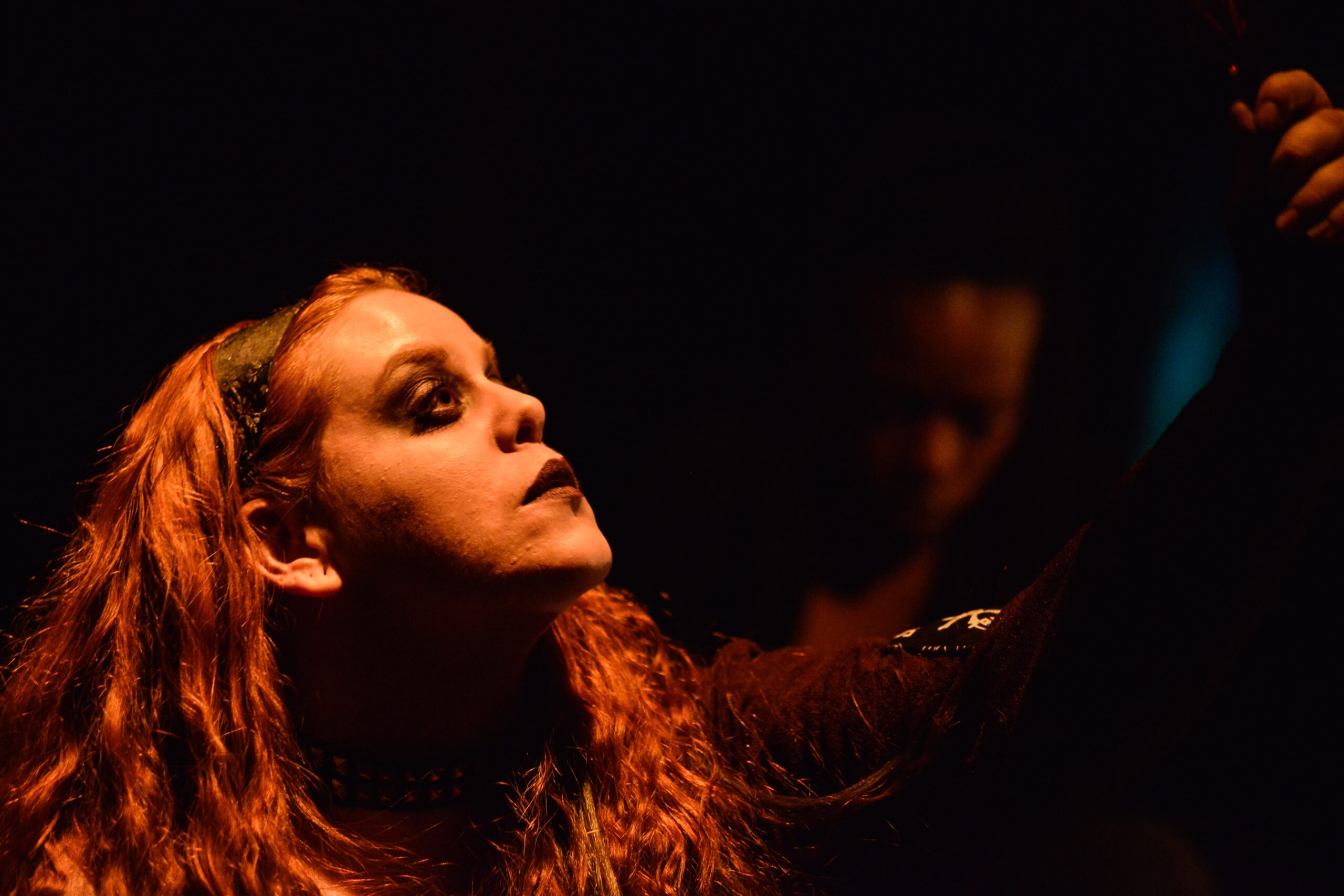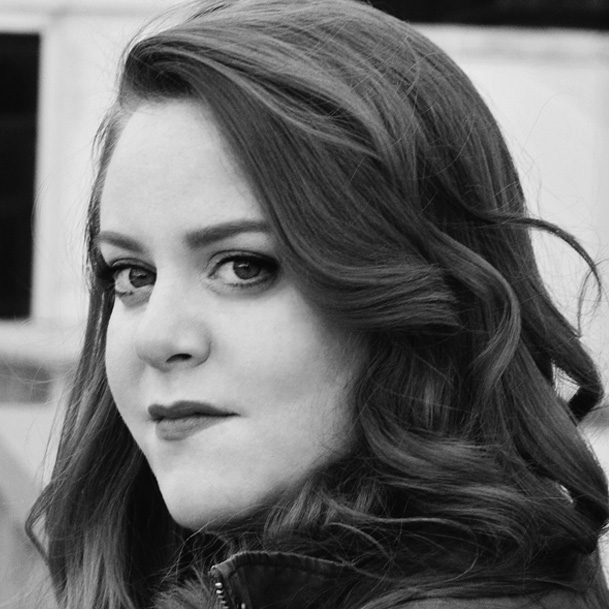Circling Back
I remember feeling a strong sense of familiarity to Kit the first time I read The Circle, in my last year at the National Theatre School. I was the oldest person in my class and Kit was one of the youngest characters, but I couldn’t shake the connection, and I wanted to investigate it. The play was Geoffrey Simon Brown’s final project before he graduated from NTS’s playwriting program. He had written these incredible visceral characters, many of their stories based on his own past experiences, and I could feel the truth behind them. I was transported back to my youth, to similar garage parties, to living carelessly, pushing the boundaries of my own mortality.
The Circle was one of my final shows at NTS. Casting was out of our control—we didn’t get the opportunity to audition for any roles at school—but I did all that I could to try to influence the casting decisions to get the role of Kit. It worked.
During rehearsal, I identified key moments in my teenage years and early adulthood that mirrored Kit’s backstory. I grew up in Winnipeg in an area called St. James, which had a “small town” mentality. I came from a good home with great parents and lived in, just like Kit, a “Truman Show–like neighbourhood.” But my teenage years were filled with an overwhelming boredom and dissatisfaction, and I needed to escape. I moved out of my house when I was seventeen years old and became very dependent on hard drugs, abusing them to the point of nearly killing myself. That time in my life left scars on me, both physically and emotionally. I hurt my parents and many friends through stealing, manipulating, and lying to support my drug habit. I am not proud of that part of my past. And when I revisited it through Kit, I was left with a gut-wrenching feeling of guilt. Those memories connected me to The Circle so completely that it felt like it had invaded my heart.
The production was also the last time my classmates and I would be on stage together. And although I was on the verge of starting an exciting new chapter in my life, I didn’t feel ready to leave this group of incredible artists. At NTS, I got to meet and play, suffer, and grow with twelve peers who I will always consider to be my family. In a way we were a part of our very own Circle.
So, revisiting this play for the Tarragon production, I have a heightened sentimentality for it.

The Circle (NTS, 2014). Photo by Maxime Côté
I have never revisited a role before. I have never had to re-enter a familiar world with a new set of eyes. When I picked up the script this time around, I could visualize the characters in my head. I could visualize the set and costume design we had for the NTS production, and I could see my old classmates dressed in those clothes, all gathered together in Ily’s garage. I remembered every one of my peers’ choices. I could see their bodies through the space and I could hear their voices speak the text and was reminded of how much fun we all had together doing the show. Even as we rehearsed the production at Tarragon, as we worked through the scenes, I constantly had these vivid memories of the previous production. It was as if these were Kit’s real memories, which added a layer to her that I hadn’t experienced before.
This time around, however, I was worried that I was approaching the text, and my character, with the same choices I had made two years before. I wanted to offer strong choices. I wanted to be specific about every moment. I didn’t want just repeat what I had done in the past. But I also didn’t want to abandon all of the choices I had previously made, in case they were necessary in telling this story. I recall one moment during rehearsal where I challenged an idea I was given to try. At first I was confident it would be telling the wrong story, but shortly after I questioned my confidence. Had it come from the choices made in the past? Going forward, I was in constant negotiation with myself about the choices I was making, whether or not they were the right ones.

Nikki Duval in The Circle (Tarragon, 2016). Photo by Cylla von Tiedemann
The Circle is defined by its characters’ relationships, and whoever is embodying the roles will bring something new to them. In the NTS production, Kit was very insecure. This choice came from connecting her to my youth, where I, too, was very insecure. I modelled the relationship between her and Mutt, her maybe-boyfriend, after a relationship I had with a guy when I was seventeen. Like Mutt, he had a nickname that he urged others to call him by. It was Turtle. He dyed his hair green to suit the name. He was the first guy to ever give me sexual attention. He made me feel wanted and pretty for brief moments, which is what I believed I needed to gain confidence. I was automatically in love with him, but we were never a couple. When we were alone, he treated me like we were together, but as soon as we were in public he was detached, which gave him the freedom to fuck other girls. He knew that he had me wrapped around his little finger and could use me for sex at his leisure. He had power over me that I submitted to.

Alexander De Jordy as Mutt and Nikki Duval as Kit in The Circle (NTS, 2014). Photo by Maxime Côté
For the Tarragon production, I had to let go of the tie between my relationship with Turtle and Kit and Mutt’s relationship. It was a challenge, because I had defined it to be Kit and Mutt’s truth. The relationship worked at NTS because the actor playing Mutt made choices for his character that reminded me of Turtle. From my perspective, this was dominance. But doing the play again made me realize this was something I was adding, rather than it having been written into the story. It wasn’t necessarily going to fit every time I revisited the role. Little moments defined this for me, like when Kit says: “We’re not a couple.” This used to be said out of embarrassment from Kit, that it was Mutt’s choice they weren’t a couple and she had to be the one to admit it to the others. This time, Kit says the line as if it is her choice, to make sure the group knows they are not a couple, which Mutt reacts immediately to, insulted. These little differences changed their relationship. Kit was less submissive to Mutt, and I realized she was confident in herself and very grounded.
I also realized, for the first time, that the space where we worked defined how I played Kit. The set design for the Tarragon production was the actual size of a single-car garage, whereas in the NTS production it was a much larger. When I played Kit at NTS, she hid a lot, physically, which made me focus a lot of energy inwards. But this time around, I couldn’t hide. The space would not allow it. As an ensemble, we were literally too close to hide anything from each other. We were consistently urged to make eye contact with one another. To place our energy forward and listen to each other. I recall a discussion about whether or not it was odd for the teenagers in this play to not be on their cellphones. The conclusion was that seeing youth listen to each other and make a pointed effort to connect is why this story is so special. These characters fundamentally yearn for connection with one another, Kit included. They need it to survive. They are building their own family, their own circle. And although I understood this yearning before, I was surprised that I had not felt it as strongly until I was placed in a smaller space that allowed these connections to blossom.

The Circle (Tarragon, 2016). Photo by Cylla von Tiedemann
I made a promise to myself that I would not compare the two productions in terms of one being better than the other. In my opinion, they are both great, and so very different. The script stayed nearly the same from when it premiered at NTS, with the exception of a few words here and there. What makes these two productions so different is the new set of people involved: from set design, to direction, to the actors. Just as I had connected to Kit, every one of the actors had done the same with their own characters. And because the characters were newly developed in the Tarragon show, Kit was, in turn, newly developed.
I don’t think that one portrayal of Kit is better than the other, or more “right.” But the amount of time I have been able to spend inside of Kit, over the years, means that I know her on a more intimate level than I did before. It has brought me to a more honest performance, and possibly even closer to the truth of the story.
The Circle is on at the Tarragon until November 27, and we’re giving away two tickets! Share this article on social media using the hashtag #TheCircle for your chance to win.
For more information about The Circle, click here








Comments